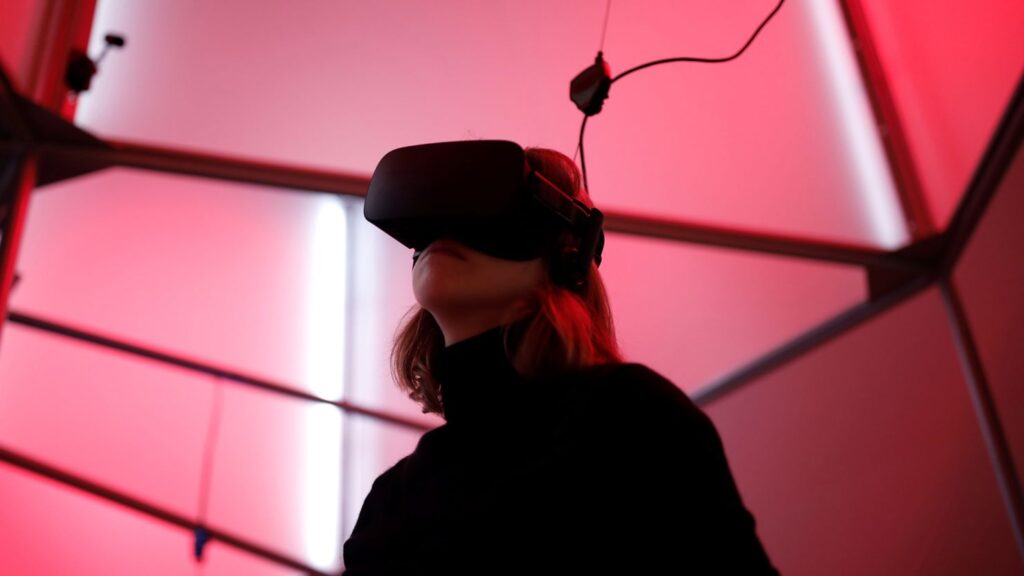
Virtual reality (VR) is on the verge of significantly impacting the entertainment industry, a promise that has long been anticipated since the introduction of the Oculus Rift a decade ago. As of 2025, the VR landscape is evolving, with major tech firms and content creators believing that the time for widespread adoption may finally be at hand.
Recent developments indicate a renewed commitment to VR. According to The Wall Street Journal, Meta is currently engaged in discussions with Disney, A24, and other entertainment companies to create immersive content for its Quest VR headsets. In conjunction with this, Apple unveiled an update to its Vision Pro headset in June, enabling users to share 3-D content, thereby enhancing the social viewing experience. Earlier this year, Apple also launched an immersive concert featuring Metallica, showcasing its commitment to blending entertainment with advanced technology.
The industry has struggled with a persistent paradox: VR headsets require a large user base to attract quality content, yet the lack of compelling offerings has stymied mass adoption. This cycle is beginning to break, according to Sarah Malkin, director of entertainment content for Meta’s VR division, Reality Labs. She asserted, “I think the ‘it moment’ is when you are regularly engaging in experiences in mixed reality that are super complementary and part of your integrated life.”
The data supports this optimism. Global shipments of augmented reality (AR) and VR headsets rose by nearly 10% in 2024, reaching 7.5 million units, with the United States seeing a nearly 30.8% increase to 3.4 million units, as reported by IDC. Although IDC forecasts a decline in shipments this year due to delayed product launches, it anticipates a significant rebound in 2026, projecting a 98.5% surge to 11.3 million units.
Despite these advancements, the financial outcomes have not always mirrored the hype. Meta’s ambitious Metaverse initiative has cost the company an estimated $46 billion over three years, with Reality Labs reporting an operating loss of $4.2 billion and only $412 million in sales in the first quarter of 2025. Nevertheless, tech giants are continuing to invest in the future of VR. For instance, Meta has invested $3.5 billion in eyewear manufacturer EssilorLuxottica SA to expand its AI spectacles initiative.
In an era dominated by advancements in artificial intelligence and self-driving technology, VR has struggled for funding. Data from Crunchbase indicates that investment in XR (extended reality) has fluctuated, peaking at $4.087 billion in 2021 before declining to $347.69 million by 2025. In contrast, funding for AI surged from $39.96 billion in 2019 to $105.36 billion by 2025.
Despite these challenges, industry experts maintain that the potential for VR remains strong. Bertrand Nepveu, a former contributor to Vision Pro and partner at Triptyq Capital, noted, “It’s still early, but there’s no technical limitation right now; we need people to invest because you need a critical mass.”
The Future of Immersive Content
While prominent figures like James Cameron and Sabrina Carpenter are exploring VR, widespread acceptance of immersive storytelling is still developing. Many studios have previously underestimated the unique demands of VR content creation. Jenna Seiden, an industry consultant, emphasized the need for tailored content, stating, “You can’t just take the flat version of what you put on Disney+ or Netflix and just throw that up. You need to build natively so the audience has a different experience per platform.”
Seiden also pointed out that exclusivity remains a key strategy for attracting audiences. Drawing parallels with the success of platforms like HBO Max and Apple TV+, she argued that exclusive content could drive audience growth in the VR space. Live virtual sports events are emerging as an accessible entry point for audiences, with Paul Raphaël, co-founder of Felix & Paul Studios, noting the straightforward adaptation of sports content for immersive platforms.
As Hollywood navigates a rapidly changing media landscape, the advent of a new distribution platform could not come at a better time. The ongoing shifts caused by streaming, the decline of traditional cable, and the post-COVID box office landscape highlight the need for innovative revenue streams. Jack Davis, co-founder of CryptTV, posited that headsets could provide a vital channel for premium content.
Investment Challenges Ahead
Despite the potential for growth, significant hurdles remain. Over the past decade, the focus of investment has shifted toward more pressing technologies, such as AI and autonomous vehicles. As funding for AI and self-driving technologies has increased, XR funding has seen a more erratic trajectory. According to PitchBook, 2019 represented a peak year for VR-focused venture capital deals, with $6.43 billion recorded worldwide. In stark contrast, VR VCs have dropped to $3.61 billion in global deals by 2025, while AI VCs have soared to $130.89 billion.
Despite these trends, Nepveu believes the tide is turning. “Now that AI is more understood, budgets are going back into XR,” he remarked. Yet, industry leaders must still persuade consumers that VR headsets are a worthwhile investment. Apple has positioned the Vision Pro as a tool for spatial computing, emphasizing productivity alongside entertainment features.
As the industry anticipates its breakthrough moment, predictions vary widely. Nepveu suggests it could arrive any day, while Raphaël anticipates one to two years. Davis estimates three to seven years, and Seiden predicts a timeline of five to ten years. Raphaël notes the potential for a paradigm shift in content consumption, asserting that non-immersive media may soon be regarded as dated.
The promise of VR in entertainment remains unfulfilled, but the groundwork is being laid for a future where immersive experiences could redefine how audiences engage with content.






